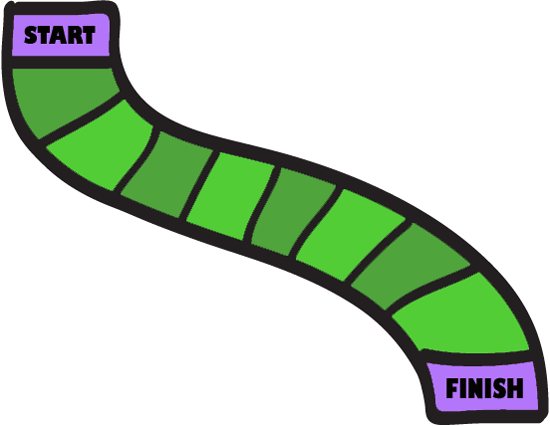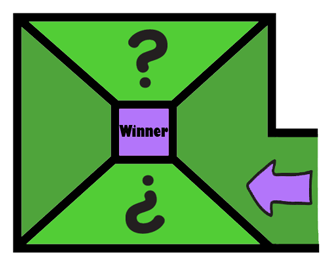|
Hi, and welcome to the gameboard design ideas page. This is the page where l will be going through, the rules of board game creation and info, on other themes (puzzles, etc) will be included!
This path similar to a concrete walking path, is usually circular, although these days it is becoming more and more oval, closed paths in between other closed paths, etc. There are puzzles and card games that look like board games, etc! I will cover the basics, and depending on your concept you may need to blur the line between these themes! Also when developing board game ideas, try to keep the playing board size small. You will find small game designs easier to scan and email to interested companies and since toy companies want to save as much money as possible when developing products, having a game with a board that doesn't need to be folded will help you increase your chances of them taking it on (and if you are developing the concept yourself, it would save you some money as well)!
This was used in Mousetrap (first released by Ideal in 1963) where at the final stages of the game the mice (playing pieces) would rotate around a few places until one of the mice would land on the right place and would WIN the game by cranking a handle that in simple terms would release a trap onto the mice! This simple idea in the middle of your board game can increase the amount of time people can play your game and of course make it more fun as well.
The main reason for this is if you approach a toy company with an idea that uses a playing concept that they have already used several times already, they may be reluctant to take it on without more development or possibly even dismiss it altogether! I know that if you go to a company like Blue Opal (Aus,) and show them a concept which plays like (has similarities with Imaginiff) for example, you are decreasing the odds of them accepting it on the spot, because many people (myself included) have shown them many ideas around this playing concept of "if you were a ? what would you most likely do, say, etc. With other players having to guess the most likely thing you would do, say, etc if you were ?". And if you guess what everyone else picks you move forward. Its best, if you want to increase your chances as much as possible of getting it accepted on the spot, to stay with new game board playing concepts that are fairly new to the company (have not been used much)! I mention this because you don't want to spend a lot of effort developing something and then have the possibility of redeveloping it again in a different way!
|


